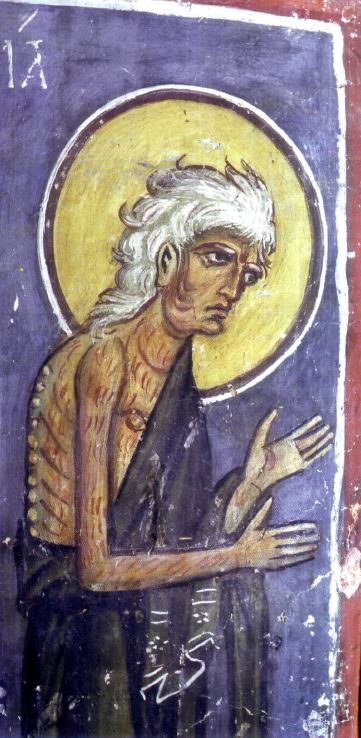La afirmación del género en el Arte Bizantino a través de Santa María de Egipto
DOI:
https://doi.org/10.56349/emblecat.240Palabras clave:
María de Egipto, bizantina, género, masculino, femenino, santidad, beatería, anacoretaResumen
Los ciclos pictóricos bizantinos de las iglesias siguen un simbolismo teológico estricto y bien planificado. No todo el mundo puede ser pintor, ni un pintor puede pintar lo que le apetezca. Sin embargo, la ortodoxia se cuestiona con figuras paradigmáticas como María de Egipto: una santa mujer representada en Bizancio como cualquier otro santo anacoreta varón. Su figura transmite cuestiones de género y santidad, subvirtiendo la idea errónea del binarismo católico, que la ortodoxia parece desmontar con María de Egipto. Aunque la legitimidad de su figura está en tela de juicio, María de Egipto es un importante objeto de estudio tanto con fines artísticos como sociales. Como afirma Jeannete Lindblom «incluso las vidas de santos puramente ficticios revelan mucho sobre la sociedad, la religión, la cultura, etc., y sobre la historia social y política de la época».
Descargas
Citas
Betancourt, R. (2020), Byzantine intersectionality: sexuality, gender, and race in the Middle Ages. Princeton University Press, Princeton, Nova Jersey. DOI: https://doi.org/10.1515/9780691210889
Bynum, C. (1991), Fragmention and Redemption: Essays on Gender and the Human Body in Medieval Religion. Nova York: Zone Books.
Bynum, C. (1987), Holy Feast and Holy Fast : The Religious Significance of Food to Medieval Women. University of California Press, Berkeley.
Bynum, C. (1982), Jesus as Mother: studies in the spirituality of the High Middle Ages. University of California Press, Berkeley.
Dumitrescu, I. (2018), “Desire: The Life of St Mary of Egypt”. A The Experience of Education in Anglo-Saxon Literature, editat per Irina Dumtriscu, 129-156. Cambridge University Press, Cambridge.
Franco, L. (2021), “Byzantine Lives: Discussing Nonbinary Sexuality, Gender and Race in Byzantium”, Harvard Theological Review 114 (4), p. 561-570. DOI: https://doi.org/10.1017/S001781602100033X
Jantzen, Grace M. (1995), Power, Gender and Christian Mysticism. Cambridge University Press, Cambridge.
Karras, R. (2017), Sexuality in Medieval Europe: doing unto others. New York Routledge, Londres. DOI: https://doi.org/10.4324/9781315269719
Lidov, A. (1991), The Mural Paintings of Akhtala. Nauka Publishers, Moscou.
Lindbblom, J. (2019), Women and públic space. Social codes and female presence in the Byzantine urban society of the 6th to the 8th centuries. Universitat de Helsinki: Helsinki, tesi doctoral.
Maguire, H. (1996), The Icons of Their Bodies: Saints and Their Images in Byzantium. Princeton University Press, Princeton, Nova Jersey.
Neville, L. (2019), Byzantine Gender. Amsterdam University Press, Amsterdam. DOI: https://doi.org/10.1515/9781641890175
Palacio, M. (2004), “¿Qué tiene para decirle M. Foucault al Cristianismo? Prólogo a una genealogia de genero de la moral sexual cristiana”, Pensamiento 60 (228). p. 413-422.
Purpura, A. (2020), “Innovating “traditional Women’s Roles: Byzantine Insights For Orthodox Christian Gender Discourse”, Modern Theology 36 (3). p. 641-661. DOI: https://doi.org/10.1111/moth.12538
Tatarchenko, S. (2012), “(trad.) Comunión de la Venerable María de Egipto» en la pintura monumental bizantina”, Vestnik PSTGU, Serie V 1 (7). p. 24–50.
Sofroni. Vie de Sainte Marie Égyptienne pénitente / par Sophrone. Suivie de Vie de Saint Syméon Stylite / par Théodoret de Cyr (trad. Arnauld d'Andilly), Montbonnot-St. Martin: Jérôme Millon, 1985.
Waldstein, M., Wisse, F. (eds.) (1995), The Apocryphon of John : synopsis of Nag Hammadi codices II,1; III,1; and IV,1 with BG 8502,2. Brill Publishers, Leiden. DOI: https://doi.org/10.1163/9789004439658_002
Watt, D. i Lees, C. (2011), “Age and Desire in the Old English Life of St Mary of Egypt: A Queerer Time and Place?”. A Middle-Aged Women in the Middle Ages, editat per Sue Niebryzdowski, 53-67. Woodbridge, Suffolk: D. S, Brewer. DOI: https://doi.org/10.1017/9781846157936.005

Descargas
Publicado
Cómo citar
Número
Sección
Licencia
Derechos de autor 2025 EMBLECAT, Estudis de la Imatge, Art i Societat

Esta obra está bajo una licencia internacional Creative Commons Atribución-NoComercial-SinDerivadas 4.0.




